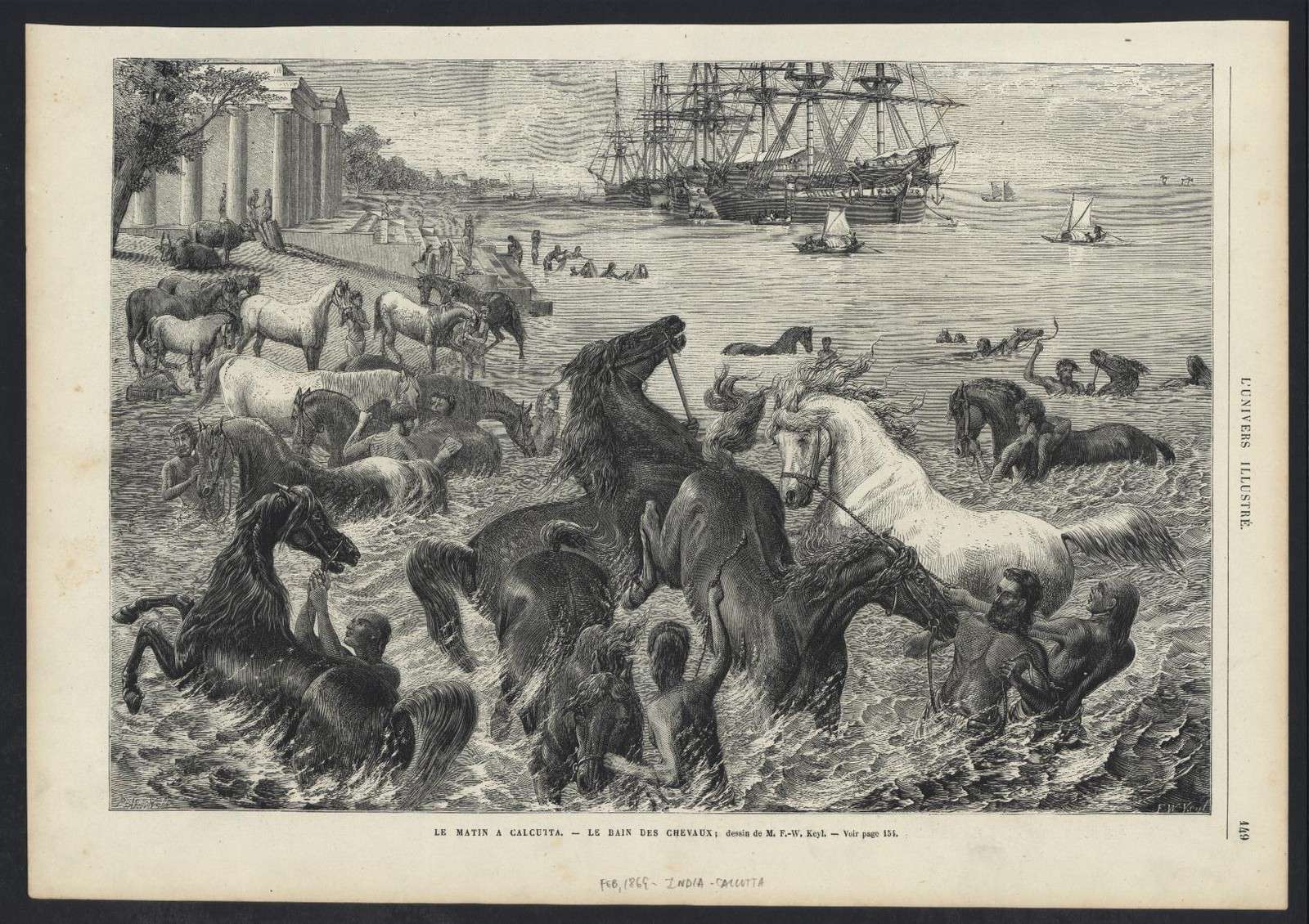Browsing through images of Calcutta in the Columbia University collection, I came across a far superior reproduction of said painting than the one I had previously shared. Here it is:
And it is from this that we also learn that the drawing is by Friedrich Wilhelm Keyl, a German painter, born in 1823 in Frankfurt. He moved to England and received training under Edwin Henry Landseer, a man known for his skilled representations of animals. Among Landseer's most well known works are the lions at Trafalgar Square. (Word has it that he could also paint with both hands at the same time.) Landseer drew a picture of his protégé (left). There's also a photograph of Keyl (right) that is available online.
It was Landseer who introduced his able pupil to the royalty, and Keyl quickly became something of - forgive the pun - the Royalty's Pet Painter. His drawings can also be seen in books like Curiosities and Wonders of Animal Life or Bible Animals. I cannot, however, say with any certainty whether or not he ever visited Calcutta. He died 1871. Apart from the painting itself, the rest of the post has very little to do with Calcutta, but there is something of personal interest that I wished to add.
The Chatterbox, a half-penny illustrated weekly for children, wanted a picture of Greyfriar's Bobby drawn from life. Greyfriar's Bobby is a story most South Point students (perhaps in other schools too) are familiar with. It was one of the few pieces in the Radiant Way that successfully made cold-hearted sadistic seven-year-olds reach for their neighbour's shirt sleeve (to wipe their eyes and nose). When Landseer turned down the Chatterbox commission, they asked Keyl. In June 1867 Keyl started work, but he later lamented that “…unfortunately the Engravers can not cut as I and others draw and you get only the Skeleton instead of the Spirit of one’s work.” [Jan Bondeson, Greyfriar's Bobby: The Most Faithful Dog in the World (Gloucestershire: Amberley Publishing, 2011)] From the same book, here is Keyl's drawing of Greyfriar's Bobby.




No comments:
Post a Comment